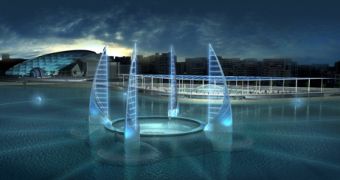The first underwater museum in the world will allow Egypt's visitors to glance at the remains of queen Cleopatra's Palace covered long ago by the waters of the Mediterranean Sea.
The area near the New Library of Alexandria, where Cleopatra and her Roman lover, Mark Antony stayed just before she committed suicide, was proposed as a building site. One of the greatest bays made by humans still holds precious artifacts and treasures dating from that time, together with the island that the palace was built on, which was submerged as a result of the many earthquakes affecting the region from the 3rd century AD up to now. During the 1990s, diving archaeologists uncovered thousands of such objects – sphinxes, statues offering gifts to the gods or even Roman and Greek ship remains in the 5 to 6 meter (16 to 20 feet)-deep waters.
Earlier this month, UNESCO funded a team that is in charge of studying the feasibility of the project, and it seems that the museum might host parts of the great Pharos of Alexandria, the lighthouse that is one of the 7 great wonders of the ancient times. The site-management expert from Egypt's Supreme Council of Antiquities, Naguib Amin, shared his thoughts: "The wealth of this area is quite impressive. Sort of the whole ancient city of Alexandria is lying under the water, just meters away from the shore."
In order to combine the atmosphere of a regular museum with the breathtaking awesomeness of observing the artifacts in their current sunken state, the building will stretch from underwater to the inland, connected by fiberglass tunnels. Jacques Rougerie, the lead architect for the feasibility study from Paris remarks: "When you go to an archaeological site, you have an irreplaceable emotion. It's not like going to see a movie. It's like the astronaut who cannot share with other people what it is like to be in space." Rougerie's designs of the museum show four tall structures in the shape of a felucca sail (the boats that once roamed the Nile), illuminated by blue lights.
The problems they are facing are related to the bay water murkiness and also to preserving the integrity of the artifacts during the building process. In order to clear the view under the waters, engineers will either have to clean them or replace them entirely by an artificial lagoon. At least the integrity of the structure will not be threatened by water pressure, since the bay is not too deep.
Once ready, in about 3 years since the funds will be secured, as experts say, the museum will beautify the regional landscape, as well as revitalize the tourism industry of Alexandria. "It will not simply be a museum as such. It is part of a whole vision to revitalize the whole city and its heritage," says Amin.

 14 DAY TRIAL //
14 DAY TRIAL //